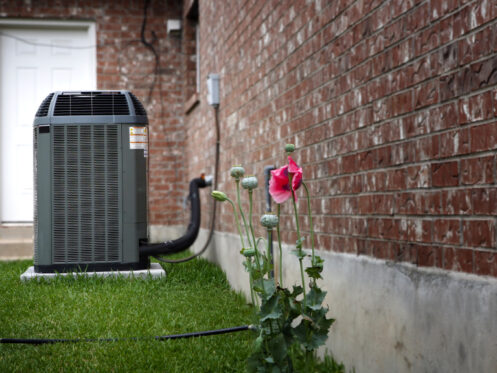When it comes to home comfort, few things are as crucial as a properly functioning HVAC system in Sandy, UT. Whether you’re upgrading your existing system or installing a brand-new one, the process can be a bit overwhelming if you’re not sure what to expect. From selecting the right equipment to understanding the installation process, there are several key aspects to consider. In this blog post, we’ll walk you through the top things to expect during a new HVAC installation.
1. Initial Assessment and Sizing
The journey to a successful HVAC installation begins with an initial assessment. A professional HVAC technician will visit your home to evaluate its size, layout, insulation, and other factors that determine the heating and cooling load. This step is essential to determine the right size of the HVAC system you need. An undersized unit may struggle to keep your home comfortable, while an oversized unit can lead to energy wastage and uneven temperature distribution.
2. Equipment Selection
Once the assessment is complete, the technician will help you select the appropriate HVAC equipment. This includes the furnace, air conditioner, heat pump, or any combination of these components. You’ll discuss efficiency ratings, energy-saving features, and other options that align with your comfort needs and budget. Choosing the right equipment is crucial for long-term efficiency and performance.
3. Ductwork Evaluation
If your home has existing ductwork, the HVAC team will evaluate its condition and compatibility with the new system. They’ll check for leaks, blockages, and proper insulation. In some cases, ductwork adjustments or repairs may be necessary to ensure optimal airflow and energy efficiency. If you’re getting a ductless system, this step won’t apply to your installation.
4. Removal of Old Equipment
If you’re replacing an old HVAC system, the old equipment will need to be removed carefully. This involves disconnecting the old components, disposing of them properly, and cleaning the area where the new equipment will be installed. Proper removal is crucial to ensure a smooth transition to the new system.
5. Installation Day
On the installation day, the HVAC team will arrive with the new equipment and necessary tools. They’ll start by setting up the components according to the manufacturer’s specifications and local building codes. The installation process can vary depending on the type of system you’re getting, but generally, it involves connecting wiring, refrigerant lines, and drainage systems.
6. Testing and Calibration
Once the system is installed, the technicians will thoroughly test its functionality. They’ll check for proper airflow, temperature control, and system cycling. Additionally, they’ll calibrate the thermostat and other controls to ensure they’re accurately communicating with the HVAC equipment.
7. Air Quality Considerations
During the installation process, it’s an excellent opportunity to think about indoor air quality. You might want to consider adding air purifiers, humidifiers, or other air quality-enhancing devices to your new HVAC system. These additions can significantly improve the comfort and health of your indoor environment.
8. Training and Information
Before the technicians leave, they’ll provide you with essential information about how to operate and maintain your new HVAC system. They’ll walk you through the thermostat settings, filter replacement schedule, and any other maintenance tasks you should be aware of. It’s essential to understand how to use your new system properly to maximize its efficiency and lifespan.
9. Clean-Up and Final Check
After the installation is complete, the HVAC team will clean up the work area, removing any debris and leftover materials. They’ll also conduct a final check to ensure that all components are properly installed and functioning as they should.
10. Follow-Up and Support
A reputable HVAC company will offer follow-up support to address any questions or concerns that arise after the installation. Whether you have queries about energy-saving settings, need assistance with troubleshooting, or want to schedule regular maintenance, a reliable HVAC provider will be there to help.
11. Considerations for Energy Efficiency
Energy efficiency is a rising concern for today’s environmentally concerned consumers. A new HVAC installation presents an excellent opportunity to enhance your home’s energy efficiency and reduce your carbon footprint. Here are some key considerations:
High-Efficiency Equipment
When selecting your new HVAC system, opt for equipment with high energy efficiency ratings. Look for systems with the ENERGY STAR label, which indicates that they meet or exceed stringent energy efficiency guidelines set by the U.S. Environmental Protection Agency. High-efficiency systems not only lower your energy bills but also contribute to a more sustainable future.
Programmable Thermostats
Upgrade to a programmable or smart thermostat as part of your HVAC installation. These thermostats allow you to schedule temperature adjustments based on your daily routine, so you’re not wasting energy cooling or heating an empty home. Some smart thermostats even learn your preferences over time and adjust settings accordingly.
Zoning System
Consider incorporating a zoning system into your HVAC installation. Zoning allows you to divide your home into different temperature zones, each with its thermostat. This way, you can heat or cool specific areas of your home as needed, rather than conditioning the entire house. Zoning systems can lead to substantial energy savings.
Duct Sealing and Insulation
As part of the installation process, pay attention to the condition of your ductwork. Properly sealed and insulated ducts prevent air leaks and energy wastage. Leaky ducts can lead to conditioned air escaping into unconditioned spaces, causing your system to work harder and consume more energy.
Regular Maintenance and Tune-Ups
After your new HVAC system is installed, make sure to schedule regular maintenance and tune-ups. A well-maintained system operates more efficiently and has a longer lifespan. Your maintenance checklist can include air filter cleaning or replacement, refrigerant level checks and refills, etcetera.
12. Budgeting and Financial Planning
While the prospect of a new HVAC installation can be exciting, it’s important to be mindful of the associated costs and plan your budget accordingly. Here’s how to navigate the financial aspect of your HVAC installation:
Cost Breakdown
Before committing to an HVAC installation, request a detailed cost breakdown from the HVAC company. This breakdown should include the cost of equipment, labor, any additional materials, permits, and any potential unforeseen expenses. Having a clear understanding of the costs involved will help you avoid surprises later on.
Multiple Quotes
Obtaining multiple quotes from different HVAC companies is a prudent approach. This not only helps you gauge the market rate for the installation but also provides insight into the professionalism and expertise of the various companies. Don’t automatically choose the lowest quote; consider the reputation and experience of the company as well.
Financing Options
If the upfront cost of the HVAC installation is a concern, inquire about financing options. Many HVAC companies offer financing plans that allow you to spread out the payments over a set period on approved credit. This can make the investment more manageable and enable you to get the system you need without straining your finances.
Install Your New HVAC With Confidence Today
A new furnace installation or AC installation is a significant investment in your home’s comfort and energy efficiency. By knowing what to expect during the process, you can feel more confident and prepared. From the initial assessment and equipment selection to the final checks and follow-up support, each step contributes to the successful implementation of your new system. Partnering with experienced HVAC professionals ensures that you’ll enjoy years of reliable heating and cooling for your home.
Want to learn more about HVAC, such as maintenance or repair? Contact Main Street Heating & Cooling today for a full list of our services and prices!


